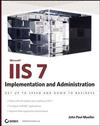The here and now of open Cloud
- 31 May, 2012 16:39
- Comments
Some might forgive you for thinking that window shopping for Cloud computing opportunities makes you a progressive, forward thinker who's a foot ahead of the flock. That might have been true one or two years ago…but you’re not going to get away with that kind of rationalisation for much longer.
As we entrench ourselves into 2012, we can say farewell to perceptions that Cloud computing is merely a visionary, ‘future priority.’ Cloud computing is very much the here and now. We are fast reaching a point where the cliché that organisations can’t afford to ignore the Cloud rings true.
It is said that there are two times in business…now and too late. The proverbial clock is ticking. Once a radical, pie in the sky concept, Cloud computing is much more than a haze or fog sweeping over the industry that will soon pass with the next big wind. It’s a valuable technology that has changed both enterprise and consumer computing as we know it.
Whenever the topic of Cloud computing is raised, everyone has an opinion, whether it’s about questioning the value of cloud computing, evaluating the best and worst cloud computing models, or even probing the security behind Cloud computing. And similarly, when it comes to the subject of investigating Cloud computing, every business has its own priorities and decides what’s important. But, no matter what the size of the business, its industry, its geographical location, or its maturity, every organisation has this in common – it needs to increase efficiency and keep down costs. Businesses across the region – and the world - are united by this need to control the bottom line.
In Asia-Pacific we’re seeing a growing realisation amongst the enterprise community that Cloud computing has even greater business potential. In his March 2011 report, Benchmarking Asia-Pacific CIOs’ Attitudes Toward Cloud Computing, Forrester’s Tim Sheedy suggests in order to achieve Cloud success it’s essential to move beyond benefits like cost savings and speed of deployment. “The true test of business alignment of Cloud services comes in their ability to drive real business outcomes. Increasing agility of specific business processes, adding new capabilities for the business, and helping develop a business-outcome-based testing strategy are the types of reasons that your peers are building cloud services into their current and future road map for business technology (BT),” according to Sheedy.
Organisations like NTT Communications are actively demonstrating that Cloud computing can be a powerful strategic force that places an organisation in a highly competitive position. Efficiencies gained through Cloud computing can enable more high-value projects that pave the way for improved business innovation and growth and ultimately, market leadership.
While that all seems straightforward, it begs the question why isn’t every business in Australia actively engaging in the development of Cloud computing strategies right now? From boardrooms and server rooms around the country CIOs and IT decision makers might reply in unison ‘If only it were that simple.’ But in fact, I believe that it can be. Unfortunately, like in other regions, Asia-Pacific Cloud computing adoption has been impacted by a lack of education and understanding, which is giving way to confusion, uncertainty, and to a degree, fear. It’s human nature to fear what we don’t understand, but Cloud computing should be celebrated for its potential, not become the source of a new phobia.
The leap to Cloud is a big deal, and an exciting one, and requires a proactive decision maker who has the ability to take the reins and prepare the organisation for the brave new world of Cloud computing. Cloud computing offers a compelling value proposition and solid business case, so it should be an easy sell when it comes to securing the favor of key organisational stakeholders, or anyone and everyone who has an interest in seeing the business succeed.
The media have commentated on numerous Cloud migrations, particularly those that are best-practice implementations and that have achieved impressive returns. With a number of Cloud computing models available, being guided by best practice is smart. The catch is to avoid vendor trickery and lock-in and maintain the freedom to build and adapt a Cloud computing infrastructure that is advantageous for your business now and well into the future. A vendor shouldn’t just sell you a “cloud-in-a-box” that’s limited to their technology stack. A vendor should become a true Cloud computing ‘partner’ who works with customers to ensure solutions are agile and scalable, as well as being secure and reliable. To deliver this, a vendor must understand the customer and its business and what is required to run leaner, innovate faster and be more flexible.
I can’t imagine any organisation brave enough to argue with that, or prepared to gamble their business on it.
Join the Computerworld Australia group on Linkedin. The group is open to IT Directors, IT Managers, Infrastructure Managers, Network Managers, Security Managers, Communications Managers.
- Bookmark this page
- Share this article
- Got more on this story? Email Computerworld
- Follow Computerworld on twitter
-
Ubuntu's marketing kick: Is Canonical the next Apple?
-
Interview with online prankster, David Thorne
-
Hoyts to diversify into online streaming
-
Which tablet should I buy? iPad 2 vs Sony Tablet S
-
UPDATED: Which NBN plan is best?
-
 Microsoft Office 2008 for Mac Bible
Microsoft Office 2008 for Mac Bible
-
 Mastering Iis 7 Implementation and Administration
Mastering Iis 7 Implementation and Administration
-
 Color Correction for Digital Photographers Only
Color Correction for Digital Photographers Only
-
 Take Back the Net
Take Back the Net
-
 Professional UML with Visual Studio .Net
Professional UML with Visual Studio .Net
-
 Professional Windows Live Programming
Professional Windows Live Programming
-
 Teach Yourself Visually HTML and CSS
Teach Yourself Visually HTML and CSS
-
 Introducing Maya 8
Introducing Maya 8
-
 The iLife '04 Book
The iLife '04 Book













Comments